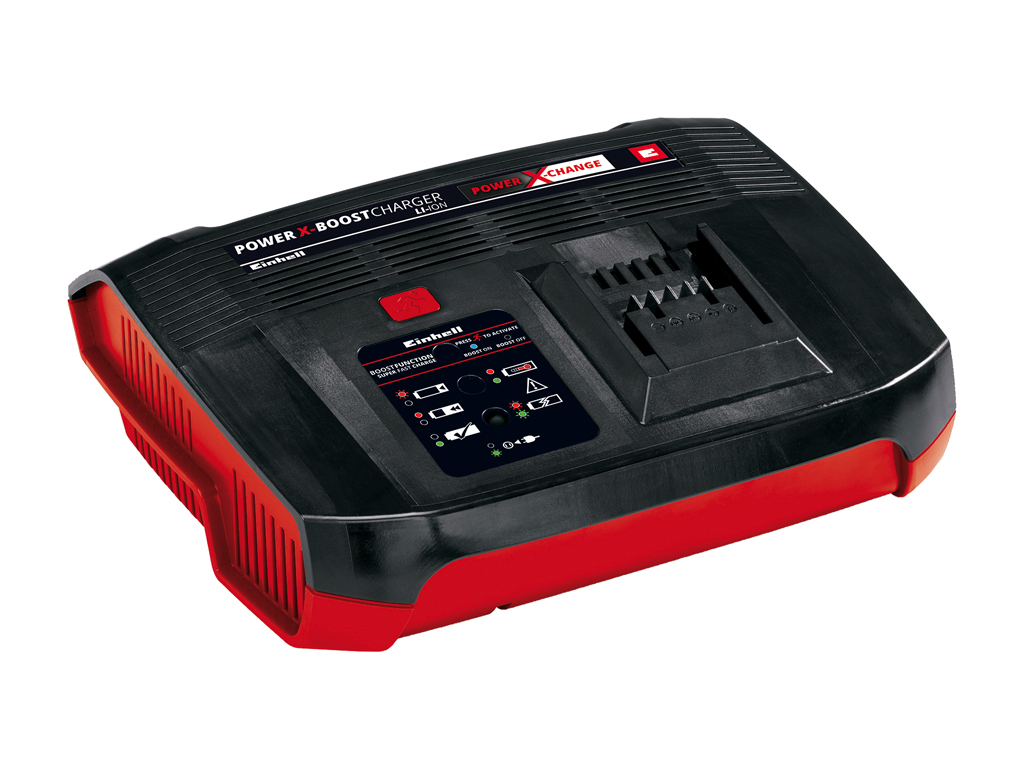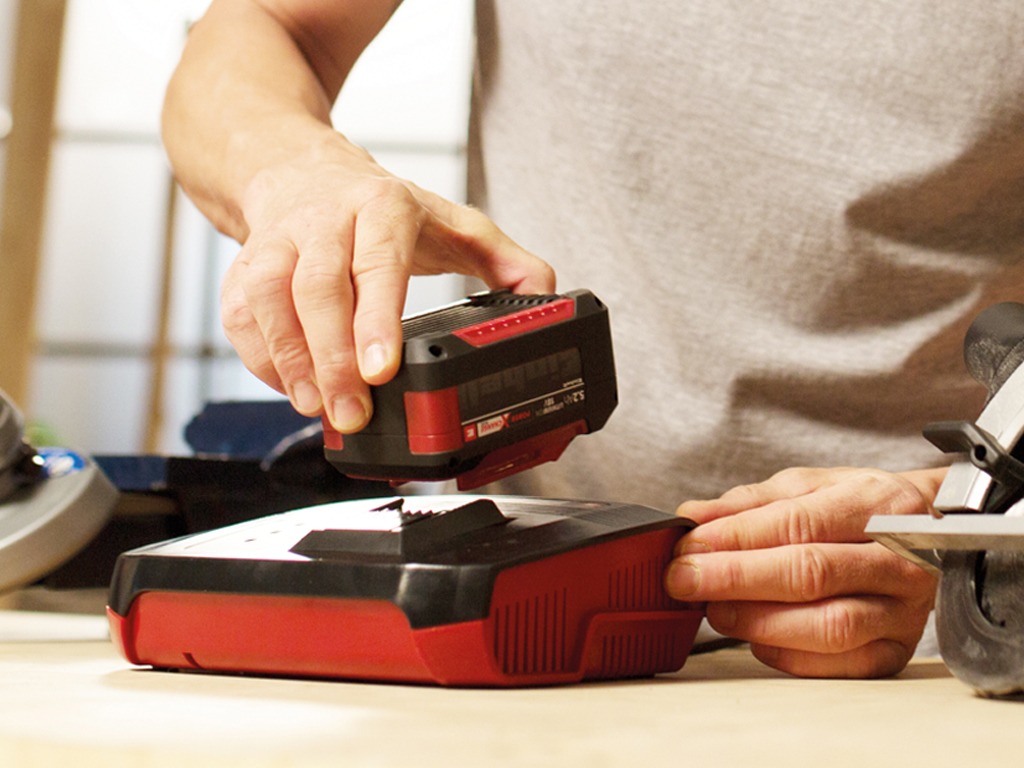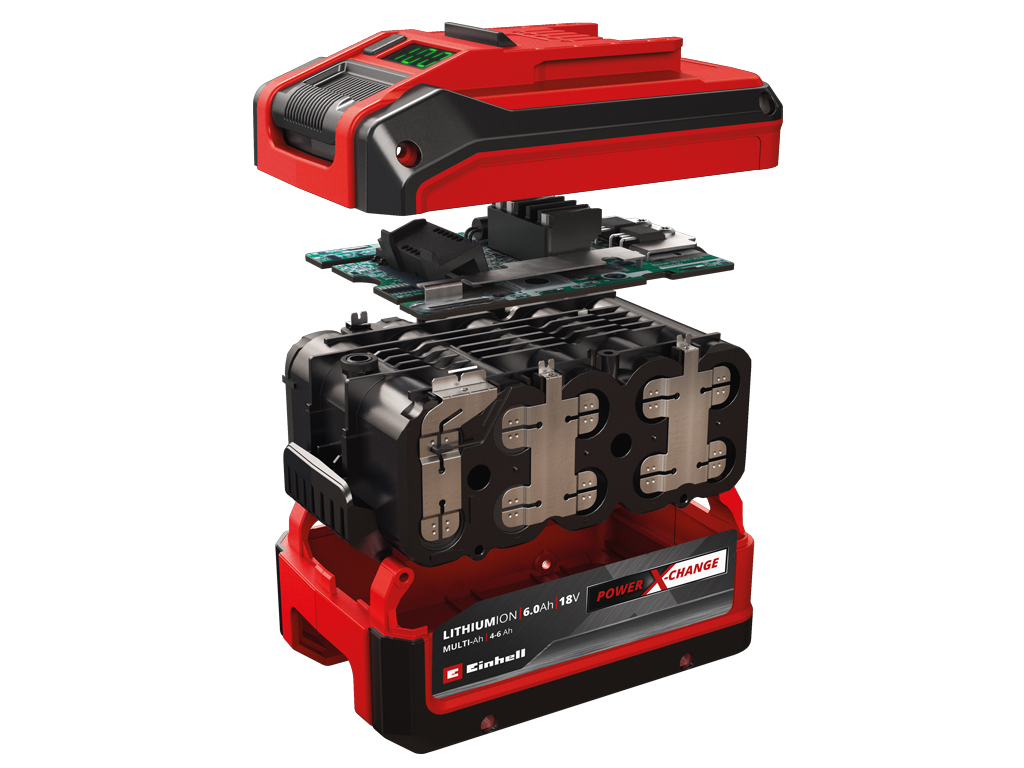Storing and charging batteries correctly
How to optimize battery life!
Batteries accompany us every day. Whether for mobile phones, laptops, e-bikes or batteries for tools. Nevertheless, there are some things we can do better in daily use to optimize their service life. In this battery guide, you will learn how to properly charge and store batteries to prevent a loss of capacity, or at least how to slow it down. We will clarify the myth of the memory effect and refresh your knowledge of the most important units in handling batteries. What was that about watts, volts and ampere-hours? Here comes your portion of battery knowledge:
Why do batteries lose capacity? How does a battery age?
In this context, "ageing" means the loss of capacity. Everybody knows the phenomenon that after a few years the smartphone runs out of juice faster and faster. Therefore, the battery is also considered a wear part. This is due to the chemical processes that take place in the battery during charging and discharging. The lithium-ions become less and less and this inevitably leads to a loss of capacity in the battery at some point. However, a battery may age even when not in use, e.g. B. in direct sunlight and the resulting heat. So aging is quite normal with a battery, but there are still some things you can do to slow down the loss of capacity and give you a longer battery life.
Charging the batteries correctly: that is how it works!
Plug in the charger and that’s it? Unfortunately no, because there is also potential for optimization when recharging. The charge current, measured in amperes (A), for example, is a decisive factor, because it makes a big difference whether batteries are charged quickly or slowly. The higher the charging current, the shorter the battery life. You can see with which charging current your charger is charging by the amperage on the data label: chargers with 3 A are more than sufficient to charge your tool battery in most cases. If things have to go faster, chargers with 6 A or more have their right to exist, such as our Boost Charger. Just be careful not to use them on every charge cycle, but only when time is really a critical factor. That is why the boost function of our Boost Charger can also be optionally switched on by key.
Continue with the right time for charging.

When are you supposed to charge? What is the memory effect?
But what about the memory effect? Does it still exist or is it a myth? Nowadays, thanks to Li-Ion batteries, we can fortunately say that the effect in the form no longer exists. But what is the memory effect? The memory effect occurs when batteries are temporarily charged when they are not yet empty. Especially with the now obsolete nickel-cadmium batteries, this led to the fact that they "memorized" the charge level and then could no longer be charged to full capacity during the next charging process. Nowadays the devices are equipped with lithium-ion batteries. These not only have a significantly longer running time, but the memory effect is also no longer important. Nevertheless, even with the new energy sources, it is decisive how long and when they are charged:
Basically, it should be noted that the capacity of the batteries deteriorates if the battery is connected to the charger for too long. It is the last percent of the charge in particular that places a particular strain on the energy storage system. On the other hand, a Li-Ion battery should not be completely discharged. The memory effect is no longer important, but as mentioned above, modern lithium-ion batteries can become deeply discharged.
What is a deep discharge?
Modern rechargeable batteries switch off automatically when the charge falls below a certain minimum level. This is to prevent deep discharge. One speaks of a deep discharge when the entire battery capacity is removed or this minimum load value has been undercut. This usually happens when batteries are stored empty and then discharge themselves even further. If self-discharge takes place for too long, deep discharge occurs, which can cause permanent damage. Can such deeply discharged batteries still be saved? Yes, sometimes.
Intercharging: Can I do that?
A lithium-ion battery feels "most comfortable" at a charge level of 30 to 60 percent. By the way, this corresponds to exactly two illuminated LEDs on the charge status display of Power X-Change batteries. Exactly contrary to the older batteries, a short break in between is very useful in case of lithium-ion batteries.
A small example: Einhell's 4-6 Multi-Ah battery can be used both as a 4 Ah battery and as a 6.0 Ah battery. As a 4 Ah battery, the cells are not fully charged or discharged. It always moves within this optimum range. This means that if the battery is set to 4 Ah, the cells are protected and the battery life can be increased by more than 300 percent.
Once the charging is clear, the next step is to store the battery correctly.

Store lithium-ion batteries correctly: where, how and how long?
The room for storage should be dry and protected from dust. The reason for this is a bridging between the positive and negative pole. This accelerates the higher the air humidity is. As a result, the battery starts to discharge itself, which increases the risk of discharging.
As already mentioned, temperature also plays a decisive role. A temperature between 10-40 degrees Celsius is recommended for batteries, but a cool room temperature of 15-20 degrees Celsius is optimal. Since higher temperatures accelerate aging, batteries should also be protected from sunlight and direct heat. A too low temperature, i.e. temperatures below 0 °C, should also be avoided. In winter, therefore, the batteries of cordless gardening tools should not be stored in the garage, but rather in a frost-free cellar or directly in the house.
During storage, care must also be taken not to store the battery for too long. Ideally, a period of up to six months should be observed. During long storage, the battery should have a state of charge of approx. 30-60 percent. With Power X-Change batteries, you can recognize this by the fact that 2 LEDs are still lit. In addition, the battery should be stored separately from the charger to prevent premature aging.
Key figures for lithium-ion batteries
Various factors play a role with batteries: The weight z. B. affects how handy a device is. Half a kilo may not make any difference with a cordless lawnmower, but 500 g can make a big difference when working with a cordless drill for a long time. However, the most important battery figures are probably ampere-hours (Ah) for running time and watts (W) for power.
The whole thing can be compared very well with a car. While the ampere-hours in a car stand for tank capacity or range, the wattage is responsible for the power, i.e. the horsepower in a car.
This applies to the comparison within a power class, which is specified in volts (V). The 10. 8 V, 18 V and 36 V voltage classes have established themselves in the market for tool batteries. Who can still remember the physics lessons at school, knows 1 W = 1 V * 1 A. Our 4-6 Multi-Ah battery z. B. has 18 V * 75 A = 1350 W maximum power But this also means that if the voltage (Volt) doubles, the power (Watt) doubles as well.

Attention myth: Why 18 V and 20 V is actually the same
18 V = 20 V? No, we have not made a mathematical error here. In the case of tools, it currently occurs more frequently that z. B. 18-volt devices are presented as 20-volt devices or 10. 8-volt devices as 12-volt devices. Is that a lie, then? Yeah.
Lithium-ion batteries consist of battery cells with a nominal voltage of 3.6 V. However, the maximum voltage can be up to 4.0 V. If now several accumulator cells are connected in series, the result is z. B. 5 * 3.6 V = 18 V and 5 * 4.0 V = 20 V. However, the technology used is the same. So don't let yourself be fooled!
Conclusion
In summary, it can be said that also modern rechargeable batteries require careful treatment, even if they are not as sensitive as older energy storage devices. Nevertheless, with our tips, you can easily extend the life of your batteries and enjoy their wireless energy even longer.


